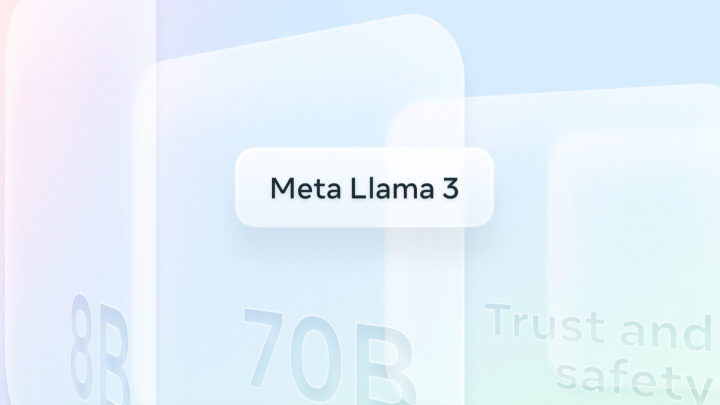Meta Llama 3
Meta has officially released Llama 3, a new series of open-source large language models (LLMs) featuring several improvements and features designed to enhance the performance of AI applications across multiple platforms. The Llama 3 models are available in two sizes: 8 billion and 70 billion parameters, both offered in pre-trained and instruction-tuned versions.

Meta has made Llama 3, its next generation of large language models (LLMs), compelling with several enhancements that make it competitive in the market.
-
Model Variants: Llama 3 is available in two main variants – a base model and an instruction-tuned version for each of the two sizes (8B and 70B). This allows for flexibility in deployment based on specific application needs.
-
Integration and Availability: The Llama 3 models are integrated into numerous platforms, including Google Cloud Vertex AI and Azure AI, making them accessible to a wide range of developers and applications.
-
Advanced Tokenizer and Training Infrastructure: The models feature an improved tokenizer and were trained on custom-built server clusters, enhancing efficiency and performance.
Applications and Use Cases
-
Meta AI Assistant: Llama 3 powers the new version of Meta AI, an intelligent assistant available across Meta's platforms like Facebook, Instagram, WhatsApp, and Messenger. The assistant is designed to handle a range of tasks, from image generation to providing real-time information.
-
Enhanced Chatbot Capabilities: The new chatbot features introduced with Llama 3 aim to provide more accurate and diverse responses, improving user interaction on social media platforms.
Availability and Commitment to Open Source
-
Open Source Access: In line with its commitment to open source, the Llama 3 models are freely accessible under permissive licenses, allowing developers to use and modify them for both research and commercial purposes.
-
Safety and Ethical Considerations: Meta has taken steps to ensure the responsible use of Llama 3, providing guidelines and tools for developers to implement the models safely in their applications.
Future Developments
- Expansion Plans: Meta plans to introduce larger models in the future, exceeding 400 billion parameters, aimed at further enhancing the model's capabilities and extending its applicability to more complex tasks.